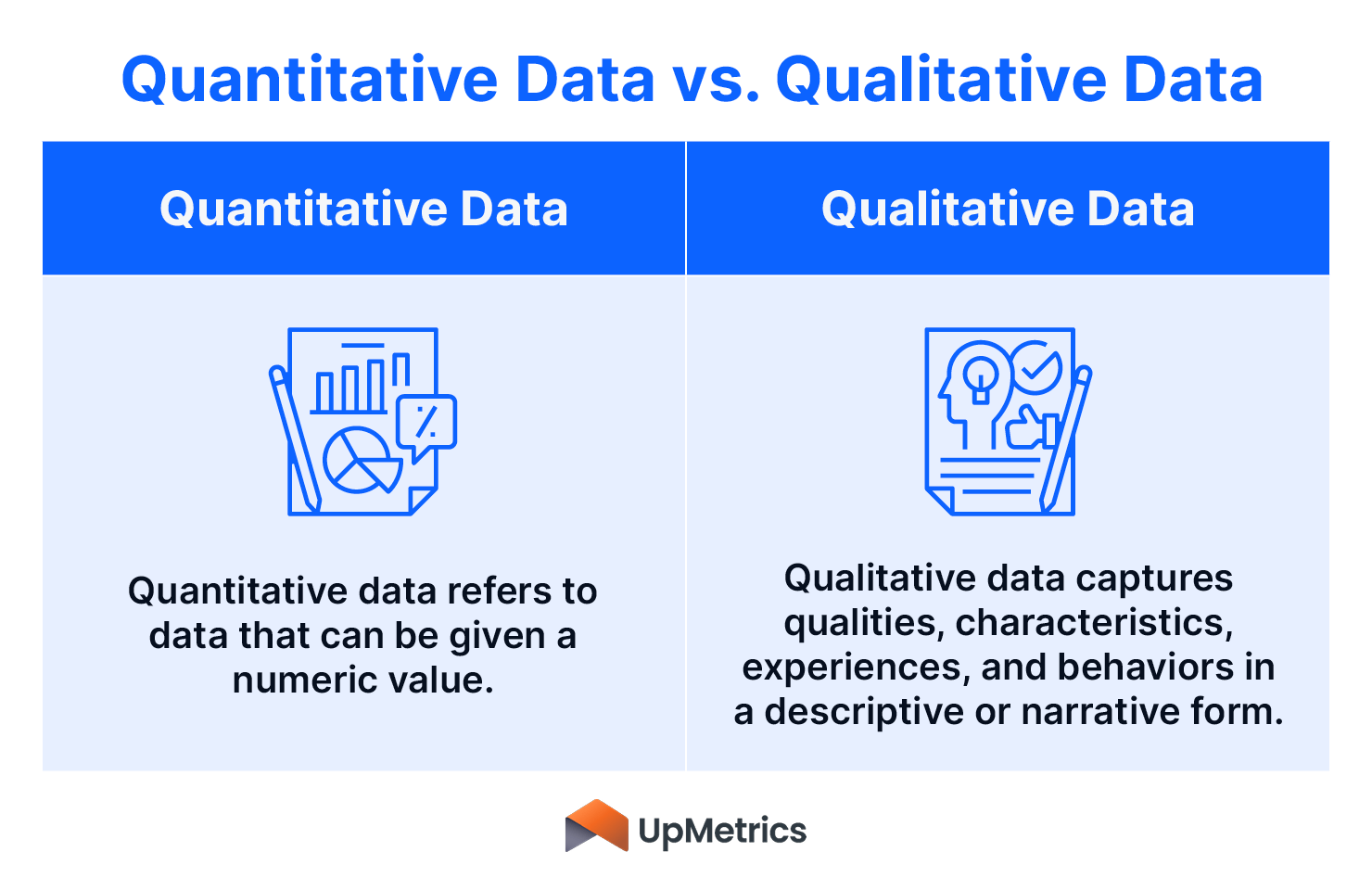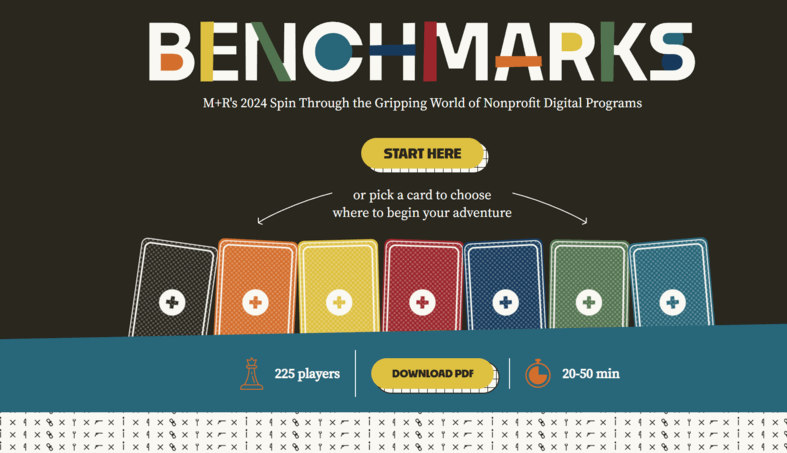Strategies for collecting and sharing nonprofit impact data
Your nonprofit collects and uses a wide variety of data, from details about its donors to information about how well your most recent fundraising campaign performed. Using this data, you can make better decisions about your operations and track progress toward your goals.
One type of data your nonprofit should gather and review regularly is impact data. It illustrates the outcomes and effectiveness of your programs, services, campaigns, and projects. This data allows you to demonstrate that your nonprofit is delivering its mission, stay accountable to your community, and identify areas where you could strengthen your organization.
Here are five actionable strategies to begin collecting and sharing impact data for your nonprofit.
1. Establish an impact framework.
Think of an impact framework as your organization’s blueprint to connect its day-to-day work to long-term outcomes. It provides a way for your team and community to think about the cause and effect of accomplishing your mission—the actions your organization takes (cause) and how they impact those you serve (effect).
Your nonprofit can work from several established impact frameworks to create its own, such as the Theory of Change (ToC) or a logic model. However, one of the most useful and straightforward impact frameworks comes from UpMetrics. According to our social impact guide, their impact framework involves your nonprofit “defining your objectives and selecting key impact indicators (KIIs) relevant to your…impact.”
Objectives
Objectives are the more granular goals that get your organization closer to achieving its mission. As you define your objectives within your impact framework, consider these dimensions of impact:
- Who participates in your programs
- What services you deliver and how much
- The quality of that delivery
- How people’s lives improve because of what you’re delivering and how you deliver it
- Community contributions, or the more significant, potentially more indirect impact your work can have on the community
For example, one of your objectives could be to expand your math tutoring program for elementary students into middle schools. This objective focuses on who participates in the program. You might have another objective to increase the average high school graduation rates across the district, which relates to the community contribution dimension of impact.
KIIs
Like key performance indicators (KPIs), KIIs are measurable values showing how much progress you’ve made toward accomplishing a specific objective. Here are a couple of examples of Key Impact Indicators (KIIs) based on the objectives outlined above:
- Objective: Expand your math tutoring program into local middle schools.
- KII: Number of middle school administrators contacted
- KII: Percentage of schools that agree to adopt the program
- KII: Number of middle school program attendees in the first month of the program
- Objective: Improve academic performance at each school.
- KII: Percentage of students who meet grade level expectations on state standardized tests
- KII: Number of students enrolled in Honors or college-level math classes
- KII: Attendance rates across the district
Once you’ve mapped out your objectives and their accompanying KIIs, you’re ready to gather the data that tells the story of your organization’s progress toward accomplishing its objectives.
2. Gather both quantitative and qualitative data.
Compile quantitative and qualitative data to get a fully understand your nonprofit’s impact

- Quantitative data is information that can be given a numeric value. Examples include the number of program participants, average test score, and percentage of donations from a specific demographic, like lapsed donors.
- Qualitative data is information that captures motivations, characteristics, experiences, and behaviors in a narrative or descriptive form. For your nonprofit, qualitative data may come as testimonials, survey responses, and anecdotal feedback.
While quantitative data is often considered the most objective and straightforward type, qualitative data is just as important. It gives you a fuller picture of your organization’s impact, yielding important insights that humanize the metrics.
For instance, if you want to provide impact information about your nonprofit’s annual gala, it is helpful to share quantitative data like the total fundraising dollars raised and the number of attendees. However,t weaving in attendees’ stories about why they continue to attend your gala year after year and including a few photos or videos from the event will make the event’s impact come alive.
To gather qualitative and quantitative data, begin by looking at the data you currently have access to. You might review your nonprofit’s CRM, marketing platforms, or financial records. Also, look for sources of publicly-available data that will help tell your nonprofit’s story, such as academic studies or governmental agency reports. Then, collect additional data as needed. You should involve staff and program participants in processes like gathering feedback on a specific program or campaign.
3. Leverage data management tools.
Once you have the raw data you need, manage it wisely so you can analyze it and draw valuable l conclusions. This is where having the right data management tools comes into play.
Much of your data can live in tools like your CRM or fundraising and marketing tools, but you’ll need to continually ensure that your data stays clean, organized, and accurate. Here are a few nonprofit data hygiene tips for doing so:
- Standardize how your team enters information. For example, when you enter a donor’s mailing address, will you write out or abbreviate their home state? Consistency in data entry will be crucial for maintaining accuracy throughout the data management process.
- Comb through your data for incorrect or harmful information. Keep the information you know will be helpful to your organization, removing anything outdated or blatantly wrong. Ensure you remove any information for minors, deceased individuals, or those on do not mail or call lists.
- Regularly review the data you have access to. Regularly keeping up with your data ensures it is always clean, accurate, and useful to your team. Set aside time every few months to dive deeply into your data management tools and ensure everything is correct and standardized.
When it comes time to analyze your data, use an impact analysis tool to help you with statistical analysis (for quantitative data) and thematic analysis (for qualitative data). Alternatively, you can work with a data scientist.
Once you have gathered insights about the progress you’ve made toward your objectives, you’ll have what you need to make strategic decisions about your nonprofit’s operations and share impact information with your community.
4. Get creative in how you present your data.
Many nonprofits think about sharing their impact data with their community and default to creating a traditional impact report. This report includes a written summary of significant impact insights from a certain period of time. Some organizations also choose to include impact information in their annual report.
While this type of impact report is a great choice, you have other options. The key thing to remember is to choose a method that best speaks to your community’s expectations and needs.
Here are a few options to consider as outlined by UpMetrics’ impact reporting guide:
- Infographic
- Interactive digital report
- Interactive web page or microsite
- Social media campaign
- Video report
Regardless of format, look for ways to make your impact data clear and understandable. Incorporate easy-to-understand data visualizations and break up long blocks of text with images or videos of your beneficiaries or your team.
Don’t be afraid to get creative and think outside the box. For some inspiration, try checking out the M+R Benchmarks Study. It’s an annual analysis focusing on trends in nonprofit marketing and fundraising, but each year it is presented in a different format and with a different theme. The 2024 M+R Benchmarks Study, for example, takes the form of a board game:

The theme of this report makes it eye-catching, memorable, and fun for readers to engage with. Keeping your brand, audience, and mission in mind, consider how you can present your impact data in a way that makes it unforgettable.
5. Be transparent about your impact.
One of the best parts of measuring and sharing your nonprofit’s impact data is the opportunity to build trust with your community. By providing evidence of your organization’s effectiveness, you can assure those who support your cause that they’re contributing to something bigger than themselves.
Committing to transparency is one of the best ways to cultivate trust through impact reporting. While you’ll want to spotlight your organization’s wins and achievements in your impact reporting efforts, you should also make space for the challenges and shortcomings you’re experiencing.
Being honest your roadblocks won’t discourage your community—it demonstrates where your organization needs more support. So, don’t be shy about highlighting where you fell short of a fundraising goal or explaining why a certain program didn’t get as much attention in the last year. Let your supporters know what you’re struggling with and how you plan to get back on track—with their help!
Collecting and sharing your nonprofit’s impact data is essential for maintaining strong relationships with your supporters and staying on track to reach objectives that get you closer to accomplishing your mission. Follow the strategies above to ensure you kickstart the process with an impact framework in mind, gather valuable data, and share it creatively and compellingly.
About the author: Cait Abernethy is the Director of Marketing at UpMetrics, a leading impact measurement and management software company that’s revolutionizing how mission-driven organizations harness data to drive positive social outcomes. With a wealth of experience across leading technology organizations, Cait is responsible for all aspects of marketing for the company and is passionate about helping the world’s leading foundations, nonprofits, and impact investors to drive accelerated social and environmental change.




